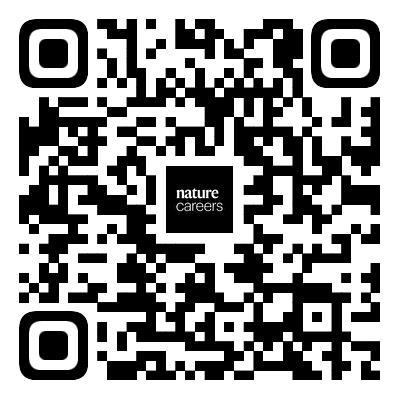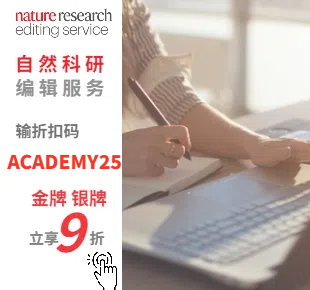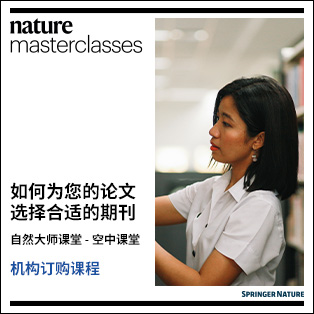 | 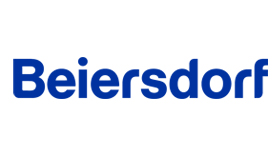 |
2024年4月19日,由拜尔斯道夫与自然科研定制服务主办的“表皮之下·国际科学护肤高峰论坛”于上海科学会堂圆满举行。会议邀请了5位来自全球知名高校、科研机构和产业界的护肤科学、生物医学等多个领域的前沿专家,分享皮肤科学的最新进展,就表皮之下微观世界的皮肤细胞对暴露组的反应、酪氨酸酶抑制剂、功效性植物物质的筛选途径、自然界的大米作为成分载体等绿色化学基础研究及科学传播等展开了讨论,为化妆品行业新质生产力的崛起和可持续的未来提供全新思路。
On April 19, 2024, "Beneath the Surface: From ingredient innovation to social impact," co-hosted by Beiersdorf and Nature Research Custom Media, was successfully held at the Shanghai Science Hall. The event brought together five forefront experts from globally renowned universities, research institutions, and industries across multiple disciplines such as skincare science and biomedical research, to present the latest advancements in dermatology and engage in discussions on cutting-edge research related to melanin inhibitors, anti-aging extracts, and green chemistry.

此次论坛吸引了来自中国科学院、中国科学技术大学生命科学实验室、上海交通大学、上海外国语大学、广西大学等各大高校和科研院所的代表,和来自化妆品上下游产业链企业参与,共同探讨化妆品行业的高质量发展道路和可持续未来。
The summit drew attendance from representatives of esteemed academic institutions and research organizations, including the Chinese Academy of Sciences, the Life Sciences Laboratory of the University of Science and Technology of China, Shanghai Jiao Tong University, Shanghai International Studies University, and Guangxi University, among others. Participants from across the entire cosmetics industry value chain also joined in, collectively exploring pathways towards high-quality development and a sustainable future for the cosmetics sector.
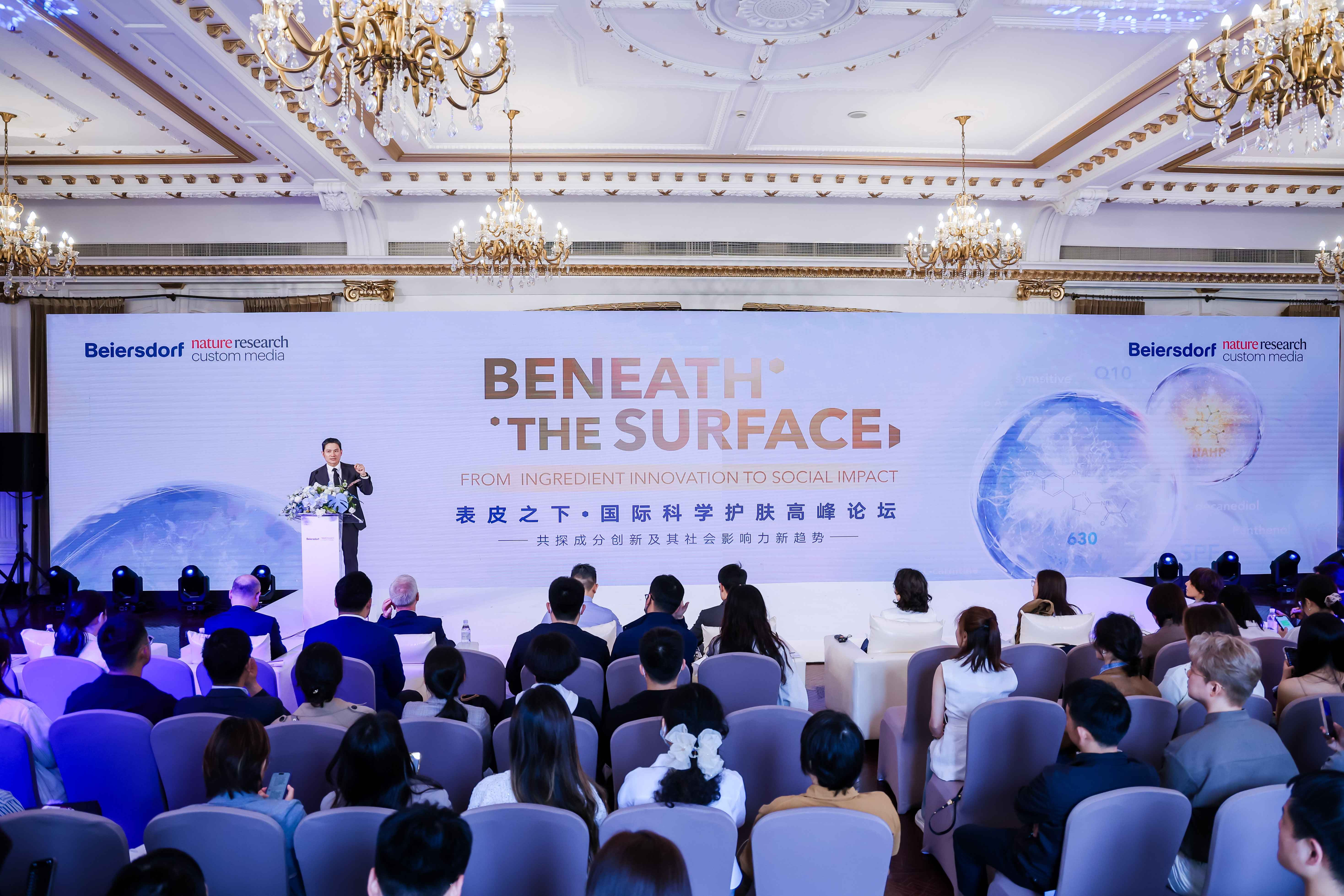
拜尔斯道夫中国企业事务总经理雷开霆主持高峰论坛。图片来源:Beiersdorf
拜尔斯道夫中国企业事务总经理、本次会议主持人雷开霆在回顾了中国化妆品行业自1989年《化妆品卫生监督条例》发布以来的变化与发展,他进一步总结随着科学技术的进步和发展,化妆品已不再停留在应用化学工程阶段,而是在实验室阶段就要进入到表皮之下的真皮层,进入到细胞分裂、蛋白质合成等理科阶段。
Ketin Lei, General Manager of Corporate Affairs at Beiersdorf China and moderator of the summit, took a retrospective look at the evolution and progress of China's cosmetics industry since the promulgation of the Cosmetics Hygiene Supervision Regulation in 1989. He further emphasized that, driven by advancements in science and technology, cosmetics development is no longer confined to the realm of applied chemical engineering. Instead, innovation now begins at the laboratory stage, delving beneath the surface into the dermis, and engaging with fundamental biological processes such as cell division and protein synthesis.

拜尔斯道夫集团首席光生物学科学家柯柏德博士(Dr. Ludger Kolbe)。图片来源:Beiersdorf
十五年前,拜尔斯道夫集团首席光生物学科学家柯柏德博士(Dr. Ludger Kolbe),就开启了应对酪氨酸酶过度活性的研究。酪氨酸酶存在于皮肤黑色素细胞中,是产生黑色素的关键酶。但当皮肤细胞产生不同量的酪氨酸酶时,会导致部分细胞产生更多的黑色素。这种不规则的色素沉淀会随着阳光照射增加而恶化,严重时会形成黄褐斑。
Fifteen years ago, Dr. Ludger Kolbe, Chief Photobiologist at Beiersdorf AG, embarked on research addressing the overactivity of tyrosinase. Tyrosinase, present within melanocytes in the skin, serves as the critical enzyme responsible for the production of melanin. However, when varying amounts of tyrosinase are generated by skin cells, it can lead certain cells to produce excessive amounts of melanin. This irregular pigmentation tends to worsen with increased sun exposure and, in severe cases, can manifest as melasma or chloasma, characterized by patches of brownish discoloration.
柯柏德博士在演讲中表示,目前业界都是使用从蘑菇中提取的酪氨酸酶进行研究,但大多数已知的酪氨酸酶抑制剂都缺乏临床疗效,因为它们是根据其抑制蘑菇中提取的酪氨酸酶的能力而被选择的。经过5年的研究和实验,柯柏德博士不仅证实了对蘑菇酪氨酸酶的抑制性与对人体酪氨酸酶的抑制性是有极大差异的,而且柯柏德博士团队首次实现在体外编辑细胞基因大量生产人体酪氨酸酶的技术。在有了充足人体酪氨酸酶作为靶点后,前后10年时间,他们从5万种针对该酶的化合物中筛选了潜在的酪氨酸酶抑制剂结构,并进一步设计了700种结构,其中第630号显示了最强人体酪氨酸酶抑制剂的效果,并且已经通过28个国家的70多项临床试验。
In his presentation, Dr. Kolbe stated that the industry conventionally employs tyrosinase extracted from mushrooms for research purposes. However, he pointed out that the majority of known tyrosinase inhibitors lack clinical efficacy due to their selection being primarily based on their capacity to inhibit mushroom-derived tyrosinase. Following 5 years of dedicated research and testing, Dr. Ludger Kolbe not only demonstrated that the inhibitory effect on mushroom tyrosinase significantly differs from that on human tyrosinase but also led his team to achieve a milestone by developing the first technology that enables the production of human tyrosinase in large quantities within cells through ex vivo gene editing. With ample supply of the human enzyme as the target, over the course of a decade, they screened a library of 50,000 compounds targeting this enzyme and refined the selection down to 700 structurally designed candidates. Among these, compound No. 630 emerged as the most potent inhibitor of human tyrosinase, having undergone rigorous testing in more than 70 clinical trials across 28 countries.
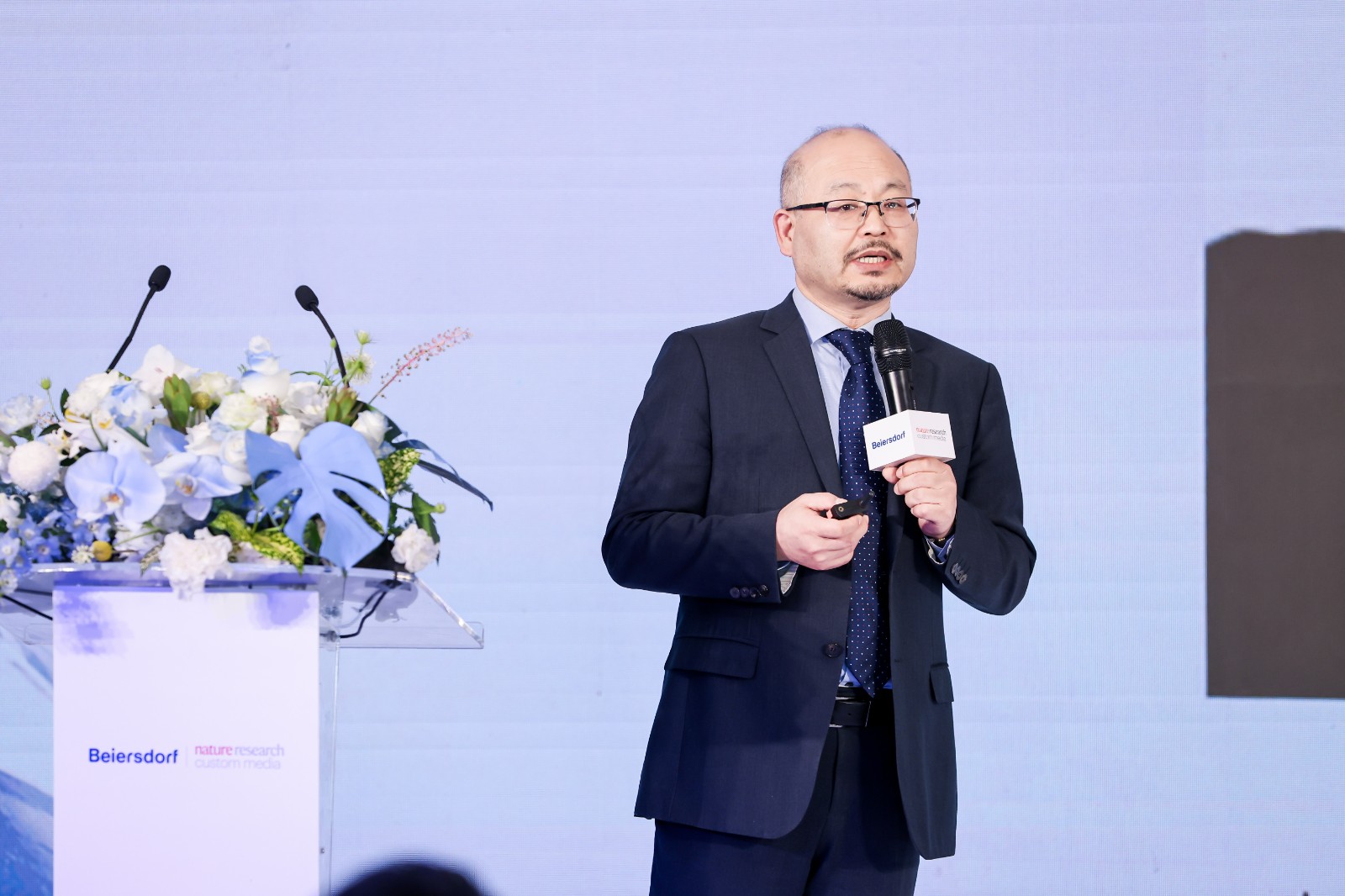
弗图医学创始人及主笔,《精准护肤—科学原理与实践》主编梅鹤祥。图片来源:Beiersdorf
弗图医学的创始人梅鹤祥,在药品、化妆品领域有超过二十年的经验,他强调,人体在环境暴露下所面临的皮肤影响值得关注,并分享了最新的研究进展。我们自出生以来就暴露在各种环境中,包括紫外线、气候、污染等,这些环境因素与个体因素、生活方式因素等共同决定着皮肤的健康和老化。他表示,暴露组对皮肤的影响这一研究方向目前已有近千篇相关论文发布,主要围绕环境代谢组、空气污染和生物标记物等主题。
Hexiang Mei, Founder of Futu Medicine, boasts over 20 years of experience in the realms of pharmaceuticals and cosmetics. He underscores the importance of recognizing and addressing the impact of environmental exposure on skin health, and has shared the latest advancements in this field of study. Humans, from the moment of birth, are continuously exposed to a myriad of environmental elements, including ultraviolet radiation, climatic conditions, and pollution. These factors, along with individual attributes and lifestyle choices, collectively shape the overall health and aging trajectory of our skin. Mei noted that research into the exposome, specifically its effects on skin, has seen a surge in interest, with nearly a thousand related articles published to date. These publications predominantly focus on themes such as environmental metabolomics, air pollution, and biomarkers, offering insights into the complex interplay between external influences and skin health.
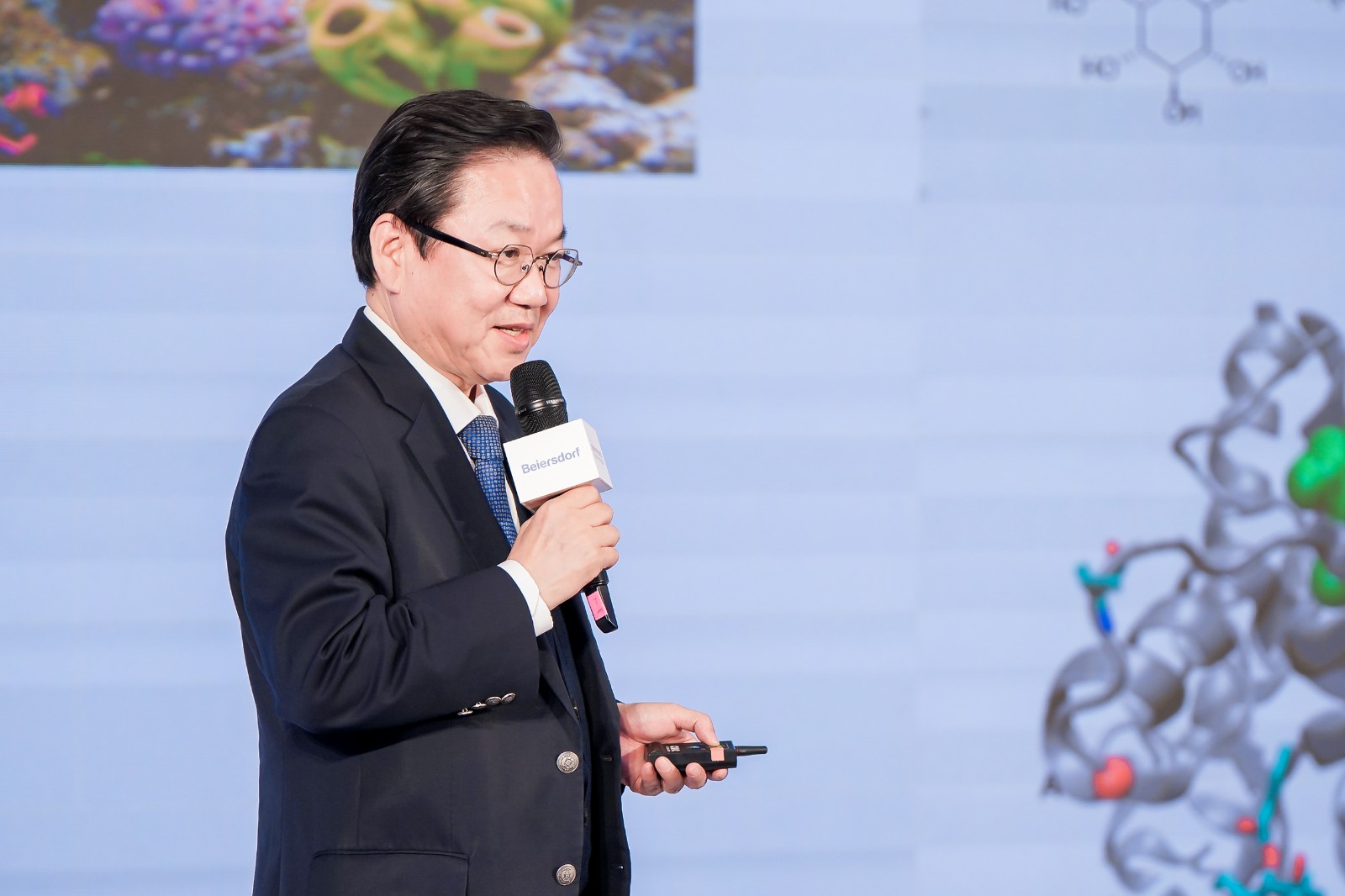
韩国延世大学生物技术系教授Ho Jeong Kwon。图片来源:Beiersdorf
而另一位演讲嘉宾,韩国延世大学生物技术系Ho Jeong Kwon教授,则专注于从天然活性小分子中汲取灵感,探索皮肤衰老的机制和调节方式。Kwon重点介绍了他近年的研究成果,包括天然活性小分子Rg3、钙离子通道ORAI1和自噬之间的关系,以及这些研究在抗衰老领域的转化应用潜力。
Another speaker, Professor Ho Jeong Kwon from the Department of Biotechnology at Yonsei University in South Korea, focused on drawing inspiration from naturally occurring small active molecules to investigate the mechanisms and regulatory processes underlying skin aging. Kwon highlighted recent findings from his research, particularly emphasizing the interplay between the natural bioactive molecule Rg3, calcium ion channel ORAI1, and autophagy, as well as the translational potential of these studies in the context of anti-aging interventions.
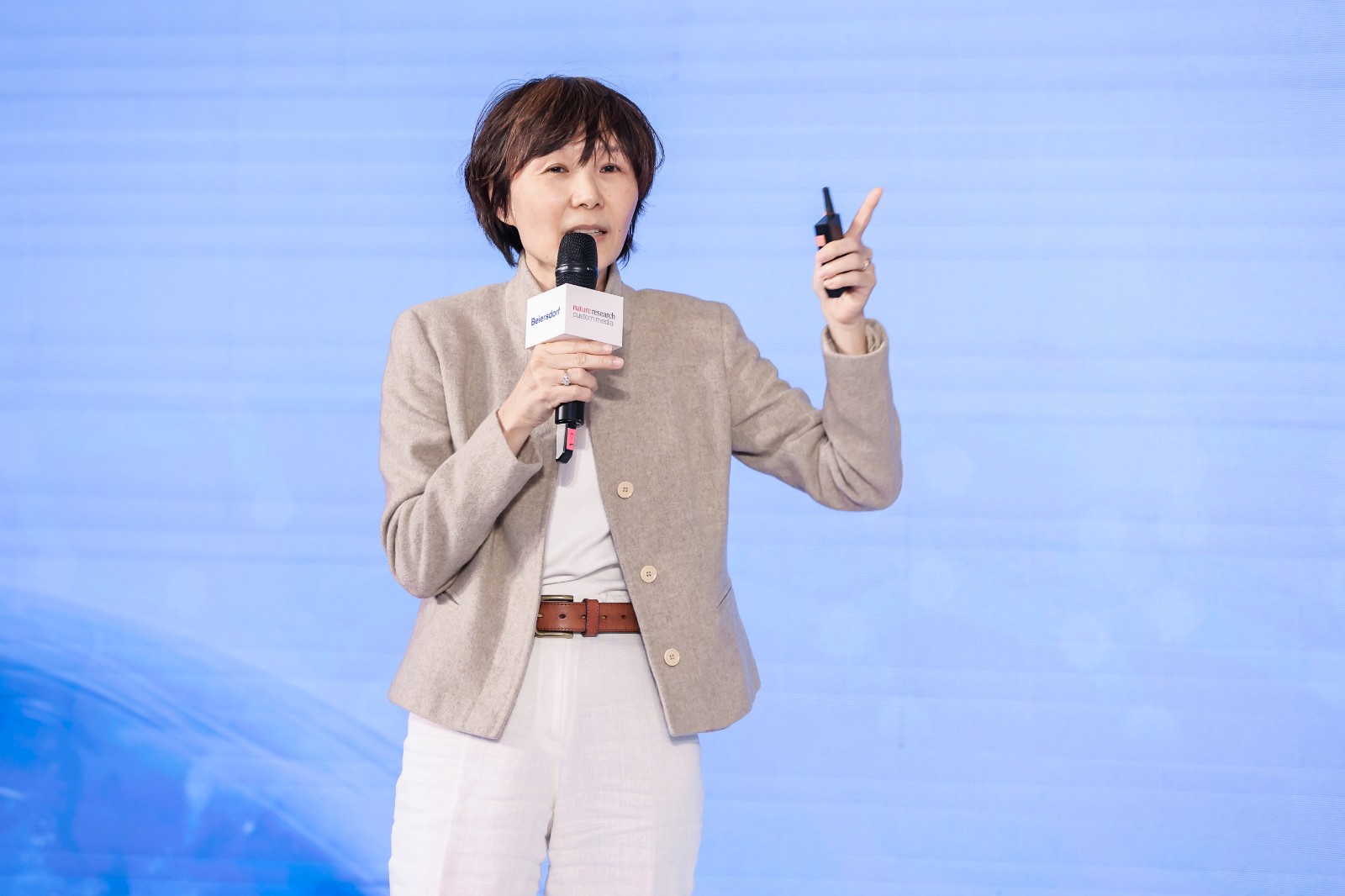
泰国朱拉隆功大学Supason Wanichwecharungruang教授。图片来源:Beiersdorf
在会议的下半场,泰国朱拉隆功大学的Supason Wanichwecharungruang教授分享了在化妆品成分可持续性方面的跨学科实践。她重点介绍了天然生物相容性和可持续载体、利用农业废弃物提取生物活性成分、以及使用最少辅料的配方三个研究案例,以促使化妆品成分对用户更安全、对环境更可持续。其中,她展示了天然大米颗粒如何同时作为皮肤屏障层和化妆品中生物活性成分的载体,而非将各种化学品混合到载体中,其具有持续释放、天然,以及与天然皮肤微生物相容的特性。
During the latter half of the conference, Professor Supason Wanichwecharungruang from Chulalongkorn University, Thailand, presented interdisciplinary practices in the realm of cosmetic ingredient sustainability. She spotlighted 3 case studies focusing on biocompatible and sustainable carriers derived from natural sources, extraction of bioactive components from agricultural waste, and the use of minimal excipients in formulations, all aimed at rendering cosmetic ingredients safer for users and more environmentally sustainable. Of particular note, she demonstrated how natural rice grains could serve dual roles as both a protective skin barrier layer and a carrier for bioactive constituents within cosmetics, eschewing the conventional approach of blending various chemicals into a carrier. These rice-based carriers exhibit properties of sustained release, inherent naturality, and compatibility with the skin's native microbiota.

施普林格·自然集团Jeffrey Robens博士。图片来源:Beiersdorf
施普林格·自然集团Jeffrey Robens博士强调了科研人员在护肤研究中承担的社会责任。公众在反复接触网络上和广告中的皮肤护理方法时,往往不清楚这些方法是否有科学依据。他指出,科研人员有责任与公众分享准确、可信的知识,以帮助其抵制错误信息,并对政策制定和监管事务产生积极影响。他还分享了多个有效的传播策略,例如如何通过写作技巧在社交媒体中以易于理解的方式分享研究成果。
Dr. Jeffrey Robens, head of Community Engagement at Springer Nature Group's Nature Portfolio, underscored the social responsibility that researchers bear in the realm of skincare research. The public is constantly bombarded by skincare methods online and in advertisements, often without knowing whether these methods are scientifically grounded. He stressed that it is the duty of scientists to share accurate and trustworthy knowledge with the public, thereby helping to counter misinformation and positively influence policy-making and regulatory affairs. He also shared several effective communication strategies, such as how to utilize writing techniques to present research findings in an easily digestible manner on social media platforms.
(嘉宾按照演讲出场顺序排列)

由左至右分别为:雷开霆、梅鹤祥、柯柏德博士、Supason Wanichwecharungruang博士、Ho Jeong KWON博士、Jeffrey Robens博士
在会议的讨论环节,各位嘉宾就护肤品关键成分的自主开发,人工智能如何助力化合物筛选,以及创新活性成分如何突破表皮递送等多个话题,进行了深入的探讨与交流。
During the conference's discussion session, the panelists delved into topics such as the independent development of key skincare ingredients, the role of artificial intelligence in facilitating compound screening, and innovative approaches to delivering active ingredients through the epidermis, engaging in thorough deliberation and exchange of ideas.









